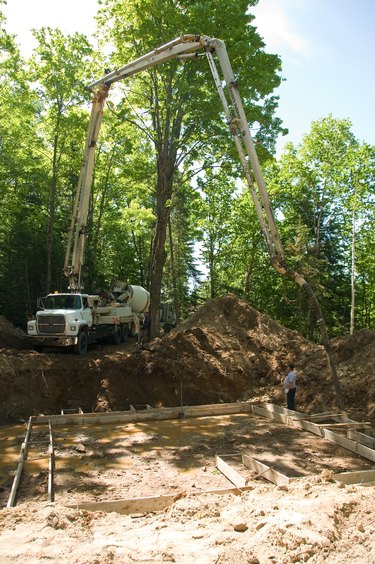
Concrete slabs are poured in several different ways. In some of these methods, the concrete is poured in stages and the foundation is constructed in pieces. In a monolithic pour, the entire slab is poured during a single process. While not suitable in locations where freezing is a serious concern, monolithic slabs have a number of advantages in areas that are suitable for this style of foundation.
Speed
Video of the Day
When you pour concrete in stages, such as with a T-shaped foundation, it takes much longer to build the foundation than with a monolithic pour. In a T-shaped pour there are three distinct phases. Footings must be poured, then cured, before the construction can continue. There are no delays of this type with a monolithic pour. The site is prepared and the slab is poured in one stage. You only need to wait for one curing process to complete.
Video of the Day
Reinforceable
Because of the way a monolithic slab is poured, it's simple for contractors to reinforce the concrete. This allows them to make a slab that's strong enough to meet the needs of a wide variety of applications. Typically, a monolithic slab is reinforced by inserting a steel mesh into the slab itself. Further reinforcement can also be added if necessary.
Consistency
When a concrete slab is poured in multiple steps, the danger of inconsistency in the concrete emerges. Inconsistencies mean that there are regions where the slab is not as strong or stabilized as it should be. A monolithic pour greatly reduces the chance of this happening, and the result should be consistent and uniform concrete throughout the slab.
Hard Ground
A monolithic slab is ideal for ground that's very hard to dig into. When pouring other types of foundations you need to dig or drill deep into the earth to pour the support structures. In very rocky or hard ground this is difficult and time consuming, if not impossible. When you pour a monolithic slab you don't have to dig that deep beneath the surface, so you avoid the problems rocky soil presents.